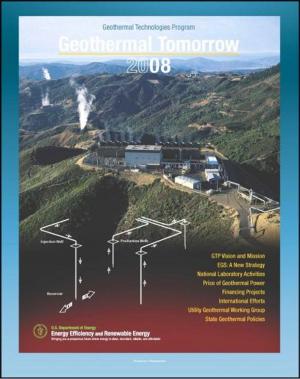Ebola Guide: Infection Control for Viral Hemorrhagic Fevers (VHFs) in the African Health Care Setting (including Lassa Fever, Rift Valley Fever, Ebola, Marburg, Yellow Fever) - Isolation Precautions
Nonfiction, Health & Well Being, Health, Ailments & Diseases, Contagious, Medical, Infectious Diseases, General| Author: | Progressive Management | ISBN: | 9781476455068 |
| Publisher: | Progressive Management | Publication: | August 3, 2012 |
| Imprint: | Smashwords Edition | Language: | English |
| Author: | Progressive Management |
| ISBN: | 9781476455068 |
| Publisher: | Progressive Management |
| Publication: | August 3, 2012 |
| Imprint: | Smashwords Edition |
| Language: | English |
This vital guide from the CDC and WHO, converted for accurate flowing-text ebook format reproduction, provides critically important information about procedures for preventing the transmission of VHFs. In Africa, viral haemorrhagic fevers (VHFs) include Lassa fever, Rift Valley fever, Marburg and Ebola haemorrhagic fevers, Crimean-Congo haemorrhagic fever (CCHF) and yellow fever. Humans initially contract an infection with a haemorrhagic fever virus through exposure to rodents or insects (for Ebola and Marburg VHFs, the natural reservoir is unknown). Person-to-person transmission of Lassa, Ebola, Marburg and CCHF viruses can occur through direct contact with VHF-infected material.
This manual describes a system for using VHF Isolation Precautions to reduce the risk of transmission of VHF in the health care setting. The VHF Isolation Precautions described in the manual make use of common low-cost supplies, such as household bleach, water, cotton cloth, and plastic sheeting. Although the information and recommendations are intended for health facilities in rural areas in the developing world, they are appropriate for any health facility with limited resources.
Contents: Viral Haemorrhagic Fevers: An Overview * How VHF Is Transmitted in Health Care Setting * What Is in This Manual * Who the Manual Is For * Objectives * How to Use the Manual * Glossary for Use with This Manual * Use Standard Precautions with All Patients * Section 2 Identify Suspected Cases of VHF * Use Information from Previous Outbreaks to Suspect a VHF * Begin VHF Isolation Precautions * Alert Health Facility Staff about Specific Risk for VHF Transmission * Report the Suspected Case to the Health Authorities * Identify Patient's Contacts and Travel History * Isolate the Patient * Wear Protective Clothing * Disinfect Reusable Supplies and Equipment * Prepare Bleach Solutions * Prepare Supply of Soapy Water * Disinfect Gloved Hands between Patients * Disinfect Used Gloves before Reuse * Dispose of Waste Safely * Use Safe Burial Practices * Prepare the Body Safely * Transport the Body Safely * Prepare Burial Site * Disinfect the Vehicle after Transporting the Body * Mobilize Community Resources and Conduct Community Education * Identify Key Community Resources * Meet with Community Leaders and Assess the Current Situation * Describe the Target Population * Describe Problems Contributing to Transmission Risk . * Identify Changes or Actions Required . * Identify Barriers to Carrying Out Recommended Changes or Actions * Develop Specific Messages * Select Activities for Communicating Messages * Assign Tasks and Carry Out Activities * Evaluate Activities * Obtain Community Feedback * Meet Regularly with the Mobilization Committee * Make Advance Preparations to Use VHF Isolation Precautions * Standard Precautions for Hospital Infection Control * Specific Features of VHFs * Planning and Setting Up the Isolation Area * Adapting VHF Isolation Precautions for a Large Number of Patients * Making Protective Clothing * Requirements for Purchasing Protective Clothing * Disinfecting Water for Drinking, Cooking and Cleaning * Preparing Disinfectant Solutions by Using Other Chlorine Products * Making Supplies: Sharps Container, Incinerator, and Boot Remover * Sample Job-Aids and Posters for Use in the Health Facility * Laboratory Testing for VHFs * Skin Biopsy on Fatal Cases for Diagnosis of Ebola * Community Education Materials * Conducting In-Service Training for VHF Isolation Precautions * Local Resources for Community Mobilization and Education * International and Regional Contacts * References
This vital guide from the CDC and WHO, converted for accurate flowing-text ebook format reproduction, provides critically important information about procedures for preventing the transmission of VHFs. In Africa, viral haemorrhagic fevers (VHFs) include Lassa fever, Rift Valley fever, Marburg and Ebola haemorrhagic fevers, Crimean-Congo haemorrhagic fever (CCHF) and yellow fever. Humans initially contract an infection with a haemorrhagic fever virus through exposure to rodents or insects (for Ebola and Marburg VHFs, the natural reservoir is unknown). Person-to-person transmission of Lassa, Ebola, Marburg and CCHF viruses can occur through direct contact with VHF-infected material.
This manual describes a system for using VHF Isolation Precautions to reduce the risk of transmission of VHF in the health care setting. The VHF Isolation Precautions described in the manual make use of common low-cost supplies, such as household bleach, water, cotton cloth, and plastic sheeting. Although the information and recommendations are intended for health facilities in rural areas in the developing world, they are appropriate for any health facility with limited resources.
Contents: Viral Haemorrhagic Fevers: An Overview * How VHF Is Transmitted in Health Care Setting * What Is in This Manual * Who the Manual Is For * Objectives * How to Use the Manual * Glossary for Use with This Manual * Use Standard Precautions with All Patients * Section 2 Identify Suspected Cases of VHF * Use Information from Previous Outbreaks to Suspect a VHF * Begin VHF Isolation Precautions * Alert Health Facility Staff about Specific Risk for VHF Transmission * Report the Suspected Case to the Health Authorities * Identify Patient's Contacts and Travel History * Isolate the Patient * Wear Protective Clothing * Disinfect Reusable Supplies and Equipment * Prepare Bleach Solutions * Prepare Supply of Soapy Water * Disinfect Gloved Hands between Patients * Disinfect Used Gloves before Reuse * Dispose of Waste Safely * Use Safe Burial Practices * Prepare the Body Safely * Transport the Body Safely * Prepare Burial Site * Disinfect the Vehicle after Transporting the Body * Mobilize Community Resources and Conduct Community Education * Identify Key Community Resources * Meet with Community Leaders and Assess the Current Situation * Describe the Target Population * Describe Problems Contributing to Transmission Risk . * Identify Changes or Actions Required . * Identify Barriers to Carrying Out Recommended Changes or Actions * Develop Specific Messages * Select Activities for Communicating Messages * Assign Tasks and Carry Out Activities * Evaluate Activities * Obtain Community Feedback * Meet Regularly with the Mobilization Committee * Make Advance Preparations to Use VHF Isolation Precautions * Standard Precautions for Hospital Infection Control * Specific Features of VHFs * Planning and Setting Up the Isolation Area * Adapting VHF Isolation Precautions for a Large Number of Patients * Making Protective Clothing * Requirements for Purchasing Protective Clothing * Disinfecting Water for Drinking, Cooking and Cleaning * Preparing Disinfectant Solutions by Using Other Chlorine Products * Making Supplies: Sharps Container, Incinerator, and Boot Remover * Sample Job-Aids and Posters for Use in the Health Facility * Laboratory Testing for VHFs * Skin Biopsy on Fatal Cases for Diagnosis of Ebola * Community Education Materials * Conducting In-Service Training for VHF Isolation Precautions * Local Resources for Community Mobilization and Education * International and Regional Contacts * References















